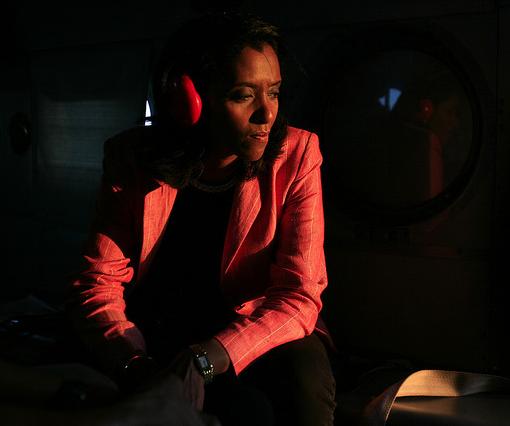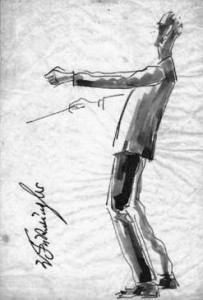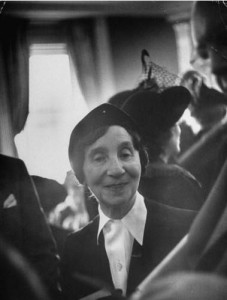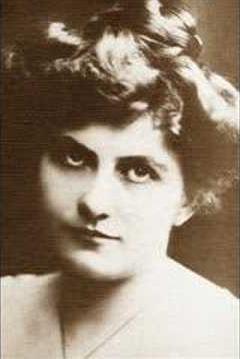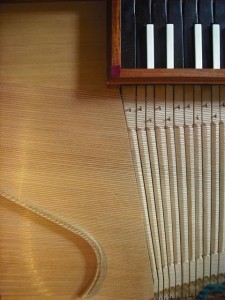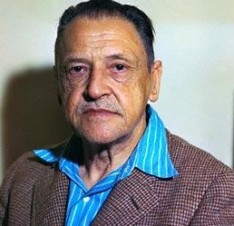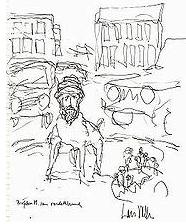Building a Friederici clavichord
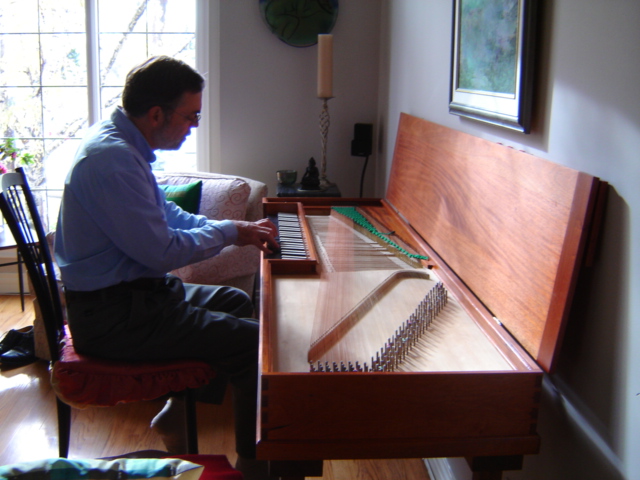
Five octave, unfretted clavichord after Friederici, 1765
I had owned and played a small fretted clavichord since 1982, and in 2004 I started researching five octave, unfretted clavichords, with the idea of building an instrument suitable for playing all of J.S. Bach, and Haydn’s F Minor Variations from 1793. We have documentary evidence that Goethe, Mozart and C.P.E. Bach all owned instruments built by the Friederici atelier. I discovered that two Friederici clavichords survived from the latter half of the 18th century–one in a museum in Paris, the other in a museum in Leipzig. Photographs of the Paris instrument were available, but not serious measurements; nearly every measurement I required was available for the Leipzig instrument, but in an obscure catalog from the Karl Marx Universität published in 1981: Hubert Henkel’s Clavichorde.
It took months, but I finally found and purchased a copy from the estate of a collector in New York. I participated in a translation of the relevant pages, and began work on a full-size technical drawing. This took much of my free time in the latter half of 2006. In December I sent off the drawing and several pages of measurements to Zuckermann Harpsichords, a Connecticut specialist, to have the keyboard cut and the soundboard, rack, balance rail, base and bridge manufactured.
I turned my basement office into a woodworking shop and spent much of 2007 building the instrument. I had it nearly completed by the time I left for Phnom Penh in December. I returned in April of 2008 and finished the stringing and initial tuning by June.
Disaster and recovery
Within weeks, around 1am one morning, the right cheek and soundboard liners came loose from the case. A loud crack and twang from the living room, heard in bed. There was nothing I could do at one that I couldn’t do at nine; I went back to sleep.
The entire soundboard had shifted left about an inch. It was the best thing that could have happened. I knew I had a bad case of ‘dead octave’, a common problem in pianos but one you really do not want in a clavichord, whose sound is already very low in volume. I repaired the damage while consulting with Peter Bavington in London. This resulted in better glue joints, bracing reinforcements, much heavier barring and, perhaps most important, a crown to the soundboard. It really helps, consulting with professional clavichord builders.
Construction details
I followed as closely as possible the original sounding lengths of the strings, the bridge and the keyboard measurements. 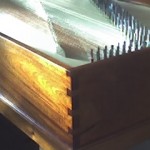 The design of the soundboard barring (ribs, cut-off bar, etc.) was fundamentally that of the Friederici, but the ribs were heavier, in keeping with an instrument now in the Deutsches Museum, built by Joseph Horn, one of Friederici’s apprentices.
The design of the soundboard barring (ribs, cut-off bar, etc.) was fundamentally that of the Friederici, but the ribs were heavier, in keeping with an instrument now in the Deutsches Museum, built by Joseph Horn, one of Friederici’s apprentices.
Except for the balance rail and rack, the internal members, along with the hitchpin rails, case parts, legs and lid were manufactured by myself and by David Chantler. We used original types of wood for the bridge, reverse keyboard and soundboard, but Cuban mahogany for the case sides and lid. I strung and finished the instrument.
Zuckermann provided all the pins, the tuning hammer, and the tangents. David J. Law in the UK manufactured the hinges. Peter Bavington provided the listing cloth, calculated the string schedule and manufactured the overwound bass strings, from Malcolm Rose wire. All the wire is Rose wire.
Results
The instrument is a success. It is capable of a wide dynamic range (for a clavichord), and classical music–at least up to 1793–as well as baroque music can be performed on it successfully.
Clavichord enthusiasts read that fretted clavichords are louder than unfretted clavichords. In the case of my instruments, 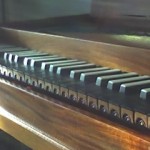 it is true that the fretted one has a sharper, and perhaps louder, attack. But the large unfretted instrument, the subject of this post, has so much more body that there is really no comparison between the two. It takes a major effort at learning, at trying to reorient one’s auditory expectation to the 17th and 18th century, to ‘get into’ a small, triple-fretted clavichord. It takes only a minor effort to do the same with the Friederici. This is true for the musician and the casual listener.
it is true that the fretted one has a sharper, and perhaps louder, attack. But the large unfretted instrument, the subject of this post, has so much more body that there is really no comparison between the two. It takes a major effort at learning, at trying to reorient one’s auditory expectation to the 17th and 18th century, to ‘get into’ a small, triple-fretted clavichord. It takes only a minor effort to do the same with the Friederici. This is true for the musician and the casual listener.
The increased body is due to the lengthened scale of the strings, the larger, more resonant and crowned soundboard, and also, to a significant degree, the string resonance between the bridge and the tuning pins, possibly enhanced by reduced downbearing on the bridge.
Playing a clavichord is about getting closer to the music, music written for that kind of instrument. It doesn’t mean you’re always going to restrict yourself to that instrument; it does mean that you will learn things about the music that the composer intended, and will try to bring that out on whatever keyboard you play. Period instruments instruct us: try playing the eighth measure of the 25th variation of the Goldberg on a clavichord tuned to Werckmeister III or any 18th century circulating tuning scheme. The dissonance—very dramatic—leaps out at you. Try playing the ninth measure on a clavichord using any tuning scheme and you’ll see how Bach used what we now regard as a piercing treble tone to arresting musical effect.
But I am not an early instrument, or ‘historical performance’ fanatic. The best music does not die at the end of its period: it lives on. Bach’s compositions for harpsichord were played by his son Carl Phillipp on the clavichord; Beethoven played them on the fortepiano; Gould on the modern concert grand. The French poet and film maker Cocteau single-handedly brought Bach’s four harpsichord concerto back into the repertory by using it for the soundtrack of his film, Les Enfants Terribles—using four pianos! It was and is still a huge musical success.
Music Samples
These recordings were made using my old triple-fretted Zuckermann clavichord. They were played by me and recorded by a young Irishman named Declan Murray, in late 1988 or early 1989, in the old SSOC compound about twenty-five minutes north of Khobar, Saudi Arabia. Declan added some resonance. The original sound quality is characterised by low volume but a very sharp attack. The famous English clavichordist, Violet Woodhouse, characterised it as sounding like a typewriter.
Aria from Bach’s Goldberg Variations.
Audio clip: Adobe Flash Player (version 9 or above) is required to play this audio clip. Download the latest version here. You also need to have JavaScript enabled in your browser.
Prelude
Audio clip: Adobe Flash Player (version 9 or above) is required to play this audio clip. Download the latest version here. You also need to have JavaScript enabled in your browser.
Canon Minor I from Bach’s Goldberg Variations.
Audio clip: Adobe Flash Player (version 9 or above) is required to play this audio clip. Download the latest version here. You also need to have JavaScript enabled in your browser.
Canon Minor II from Bach’s Goldberg Variations.
Audio clip: Adobe Flash Player (version 9 or above) is required to play this audio clip. Download the latest version here. You also need to have JavaScript enabled in your browser.
Chromatic Fantasia
Audio clip: Adobe Flash Player (version 9 or above) is required to play this audio clip. Download the latest version here. You also need to have JavaScript enabled in your browser.
Chromatic Fantasia (continued)
Audio clip: Adobe Flash Player (version 9 or above) is required to play this audio clip. Download the latest version here. You also need to have JavaScript enabled in your browser.
Chromatic Fantasia (continued)
Audio clip: Adobe Flash Player (version 9 or above) is required to play this audio clip. Download the latest version here. You also need to have JavaScript enabled in your browser.
Canon Major I from Bach’s Goldberg Variations.
Audio clip: Adobe Flash Player (version 9 or above) is required to play this audio clip. Download the latest version here. You also need to have JavaScript enabled in your browser.
Canon Major II from Bach’s Goldberg Variations.
Audio clip: Adobe Flash Player (version 9 or above) is required to play this audio clip. Download the latest version here. You also need to have JavaScript enabled in your browser.
Aria from Bach’s Goldberg Variations.
Audio clip: Adobe Flash Player (version 9 or above) is required to play this audio clip. Download the latest version here. You also need to have JavaScript enabled in your browser.
I played and recorded the following two pieces on the large Frederici instrument which is the subject of this article. David Chantler kindly lent me his professional recording equipment. The clavichord is the quietest of all keyboard instruments–these two music samples are not loud. Playing it teaches you in a striking way just how different a quiet night in Leipzig must have been in 1765. No modern background noise at all. Playing it today at one in the morning, perhaps with a snow storm outside and all traffic over (as quiet as it’s going to be) struggling to bring out every note, one’s attention focusses in, and after a few minutes a forte–which in aural reality is a piano–sounds to the ear or the mind of the player like an actual forte.
A Dutchwoman of my acquaintance put it well. “Playing the clavichord,” she said, “is like a meditation.”
Variation 15 from Bach’s Goldberg Variations: a canon in inversion at the 5th.
Audio clip: Adobe Flash Player (version 9 or above) is required to play this audio clip. Download the latest version here. You also need to have JavaScript enabled in your browser.
Variation 25 from the Goldberg. This variation was marked ‘adagio’ in Bach’s own hand, in his copy of the printed score.
Audio clip: Adobe Flash Player (version 9 or above) is required to play this audio clip. Download the latest version here. You also need to have JavaScript enabled in your browser.





